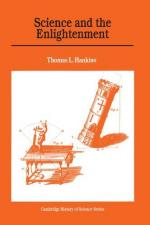
|
| Name: _________________________ | Period: ___________________ |
This quiz consists of 5 multiple choice and 5 short answer questions through Chapter 2, Mathematics and the Exact Sciences.
Multiple Choice Questions
1. According to the narrator in Chapter 1, who was one of the originators of the mechanical philosophy who believed there were no forces or powers in matter?
(a) Descartes.
(b) Bernoulli.
(c) Leibniz.
(d) Carnot.
2. Who carried rational mechanics to the highest point of generality and abstraction that it was to reach during the Enlightenment?
(a) Diderot.
(b) Hermann.
(c) Daniel.
(d) Lagrange.
3. In a letter of September 21, 1781, who wrote to his mentor Jean d'Alembert that he feared mathematics had reached its limit?
(a) Joseph-Louis Lagrange.
(b) Sylvestre-Francois Lacroix.
(c) Bernard Fontenelle.
(d) Diderot.
4. Vis viva was thought by its creator ________ to be the dynamic quantity that was conserved in the universe, according to the narrator in Chapter 2.
(a) 'sGravesande.
(b) Leibniz.
(c) Euler.
(d) Descartes.
5. What was the name of the revolution that was a cultural event associated with Galileo Galilei, Johannes Kepler, Rene Descartes, and Isaac Newton?
(a) Scientific Revolution.
(b) American Revolution.
(c) French Revolution.
(d) Enlightenment Revolution.
Short Answer Questions
1. The narrator reveals that vis viva was a measure of ________ to conserve his creation while "action" was a measure of his efficiency.
2. The names "biology" and "sociology" were names and fields that were created in what century, according to the narrator in Chapter 1?
3. What was the name of the curve traced by the end of a string as it is unwrapped from another curve found in Chapter 2?
4. In 1819, who gave a clue to the source of this pessimism when he wrote that "the power of our analysis is practically exhausted"?
5. Madame du Chatelet supported the Leibnizian theory of ________ because it gave a better account of free will.
|
This section contains 274 words (approx. 1 page at 300 words per page) |

|




